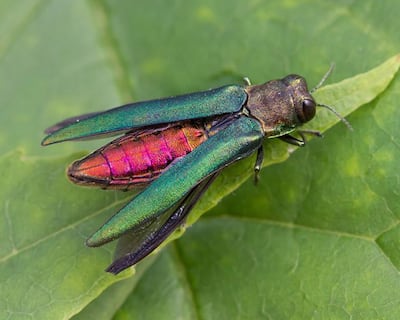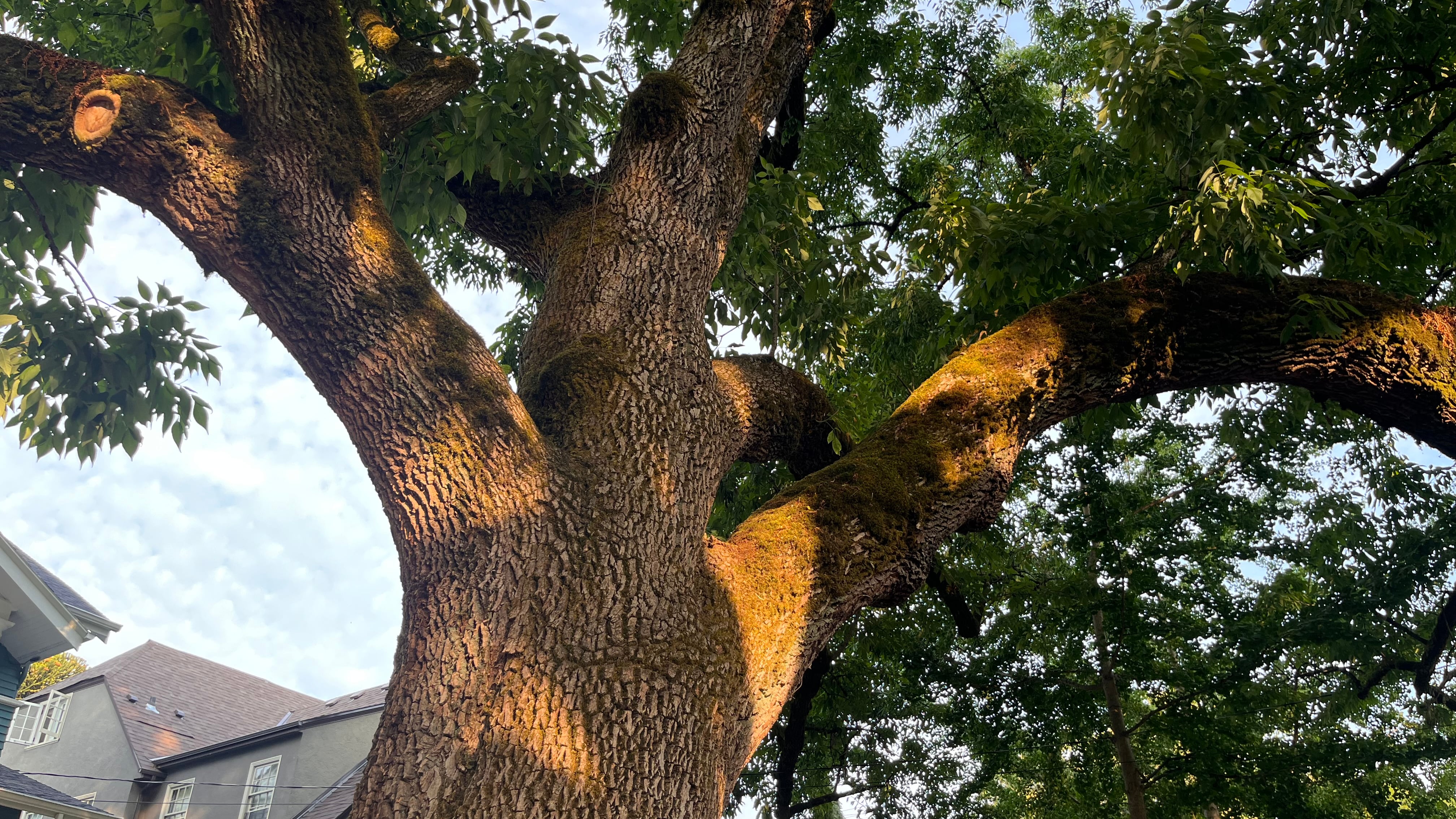Portland’s urban foresters are girding for the impending destruction of the city’s ash trees by the emerald ash borer.
The beetle—green, shiny, and smaller than a thumbnail—has been found in the four counties southwest of the city, but has not yet set foot (to the city’s knowledge) in Multnomah County.
Nearly 100,000 ash trees across Portland are vulnerable to the pest, which kills trees by boring D-shaped holes that disrupt their ability to take up water. Once the bug bites, trees have a 99% fatality rate, says Anya Moucha, the city’s forest pests and pathogens coordinator.
“When the EAB infests an area, it’s never been eradicated,” Moucha says.
Portland is likely to become the beetle’s first urban stop on the West Coast. The ash borer has devastated trees in the American Midwest and along the Eastern seaboard, but on this coast, it has only appeared in four Oregon counties—all perilously close to Portland.
The city has warned Portlanders against moving firewood (transporting hardwood out of Clackamas, Washington, Yamhill, and Marion counties is against the law) and asked them to report any signs of ash borer to the Oregon Invasive Species Hotline.

The city’s prevention plan, according to a statement by Portland Parks & Recreation’s Urban Forestry division, involves collaborating with homeowners to treat healthy trees with insecticides and remove ash trees smaller than 6 inches. Urban Forestry says residents should identify ash trees on their property and on the street, and plan to protect them with chemical treatment or by removing smaller trees. Residents can get free permits to do their own removal and replacement of street trees.
Though ash trees make up only about 1% of Portland’s urban canopy, losing tens of thousands of trees in a few years could be devastating. The city’s tree canopy, as has been the case in other major cities, has steadily been declining in recent years.
“One percent doesn’t sound like much, but it is a lot,” Moucha says. “A lot of them are these really beautiful mature trees that provide aesthetic value and also shade, and, as we know, our cities are heating up because of climate change.”
Another concern is losing about 10,000 street trees over a few years, resulting in an abrupt loss of shade that would take decades to restore. Foresters are concerned that if those trees’ replacements are all planted within a few years, they could form homogenous populations of similarly aged trees that are more susceptible to disruption.
Matt Mills is an emerald ash borer support specialist with the state’s Urban Community Forestry program.
“The important lesson here is, as you’re planting an area, put in a variety of different species of tree” Mills says. “I’m sure you can imagine a street that’s just lined with ash trees. Once EAB comes through, all those trees are going to be gone.”
Though all ash trees are at risk, loss of the Oregon ash, the state’s only native ash tree, could destabilize riparian ecosystems. Few streamside trees can grow as tall, and the shade it provides maintains cool water temperatures, critical for fish reproduction. Moucha says the landfall of the emerald ash borer would compound the stress of climate change that the city’s ash trees are already experiencing.
As Portland waits, the Urban Forestry team will begin injecting a chemical treatment into trees in parks and identifying trees for removal.
You can find out more about the emerald ash borer on the state’s and city’s websites.

